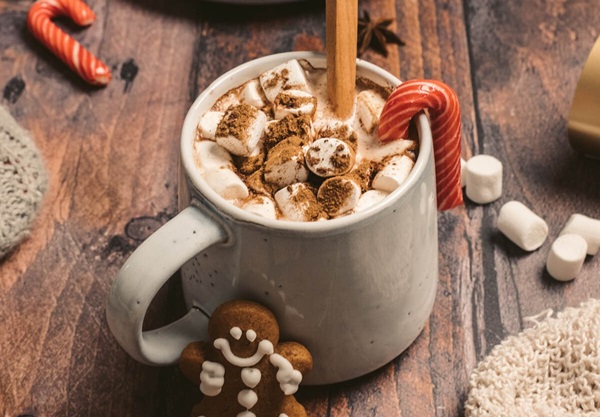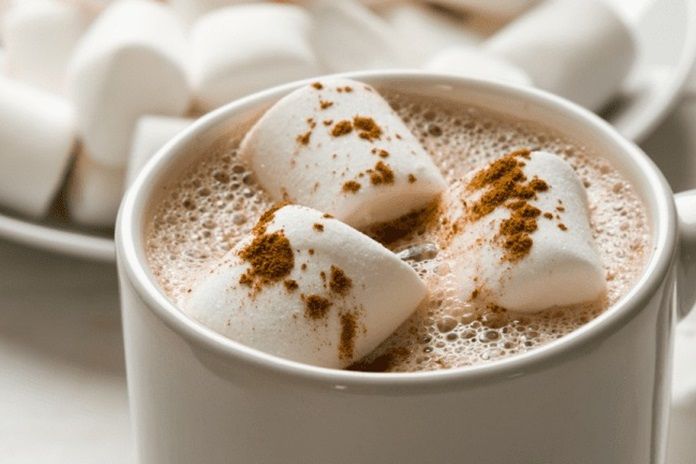National Cocoa Day is celebrated every year on December 13. Hot cocoa is usually made with cocoa powder, heated milk or water, and sugar. Sometimes it’s called hot chocolate, but that’s made with ground chocolate that contains cocoa butter. To make cocoa powder, cocoa beans are fermented, dried, roasted, and ground, and then the cocoa butter is removed. What remains is the cocoa powder used to make hot cocoa, which can be a relatively healthy drink with low fat and calories, depending on the ingredients you add.
History of National Cocoa Day
Chocolate has a rich and ancient history, dating back about 5,000 years. Early forms of chocolate were quite different from what we enjoy today since sugar was rare at the time. Instead, the beverage was flavored with vanilla and chili and was consumed year-round.
During the Olmec period, chocolate was especially popular and was even used in spiritual practices. In pre-Columbian Mesoamerica, it was so valuable that it was used as a form of currency.
European explorers first encountered chocolate in South America, where it had been enjoyed for centuries before their arrival.

European explorers first encountered chocolate in South America, where it had been enjoyed for centuries before their arrival. Initially, the Spaniards found it bitter and unpleasant. Over time, chocolate became an acquired taste.
It wasn’t until it reached Europe and became a luxury drink for the wealthy that it was sweetened, leading to the creation of milk chocolate. Powdered chocolate became available in 1828, and shortly after, chocolate bars and instant hot cocoa were developed.
| 1502 (Europeans Discover Cocoa) | During the summer of 1502, on his fourth visit to the Americas, Christopher Columbus finds cocoa beans from a native Mayan trader near modern Honduras. |
| 1729 (Cocoa Grinder) | The first mechanical cocoa grinder is invented in Bristol, U.K. |
| 1824 (Cadbury) | Cadbury is founded by John Cadbury in Birmingham, U.K., where he sells tea, coffee, and drinking chocolate. |
| 1947 (Rising Prices Lead to Protest) | The increase in the price of chocolate candy bars by three cents in Canada leads to short-lived country-wide youth protests. |
| 2005 (Charlie Tops Box Office Charts) | Charlie and the Chocolate Factory, which makes all things cocoa-alluring, topped the box office charts for five weeks. |
5 Interesting Facts About Chocolates
- Packed with Flavor: Chocolate has over 600 flavor compounds that contribute to its unique aroma.
- Health Benefits: Dark chocolate, in particular, is rich in antioxidants and can have various health benefits. It has been linked to improved heart health, better brain function, and even reduced inflammation. The flavonoids in dark chocolate are thought to be responsible for these positive effects.
- Four Types of Chocolate: The main types are dark, milk, white, and blond chocolates.
- White Chocolate Isn’t Technically Chocolate: White chocolate contains cocoa butter but lacks cocoa powder and cocoa solids, so it’s not considered true chocolate.
- Powerful Industry: The global chocolate industry is valued at over $75 billion annually.
- Flavor Complexity: Chocolate has an incredibly complex flavor profile. A single piece of chocolate can contain over 600 different flavor compounds. This complexity is why chocolate tasting is akin to wine tasting, with each variety offering unique flavor notes and characteristics.
- High Caffeine Content: Dark chocolate has 12 milligrams of caffeine per ounce, while milk chocolate has 9 milligrams—more than espresso.
Conclusion
National Cocoa Day, celebrated on December 13, offers a delightful opportunity to honor the rich history and enduring appeal of cocoa. From its ancient origins in Mesoamerica, where it was revered and used as currency, to its evolution into the sweetened treat we enjoy today, cocoa has traveled a remarkable journey.
The creation of hot cocoa, made from cocoa powder and often enjoyed in its simplest form, allows us to appreciate both its historical significance and its modern-day pleasures. Whether enjoyed for its complex flavors, health benefits or simply as a comforting drink, hot cocoa remains a beloved part of our culinary heritage. As we celebrate National Cocoa Day, we not only indulge in a warm beverage but also connect with a tradition that spans thousands of years.
Frequently Ask Question
1. What is National Cocoa Day?
National Cocoa Day is celebrated on December 13 each year to honor the rich history and enjoyment of cocoa. It’s a day to appreciate cocoa’s journey from ancient times to its place in our modern lives.
2. What is the difference between hot cocoa and hot chocolate?
Hot cocoa is made from cocoa powder, heated milk or water, and sugar. In contrast, hot chocolate is made from ground chocolate that contains cocoa butter, giving it a richer and creamier texture.
3. How is cocoa powder made?
Cocoa powder is produced by fermenting, drying, roasting, and grinding cocoa beans, and then removing the cocoa butter. What remains is the cocoa powder used to make hot cocoa.
You may also like to read, National Bittersweet Chocolate with Almonds Day – November 7, 2024
